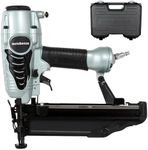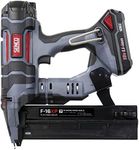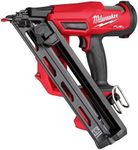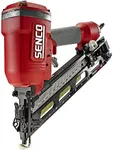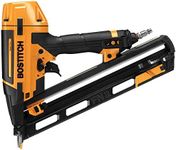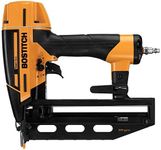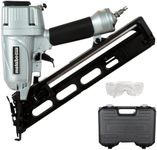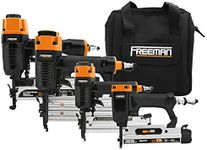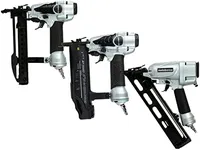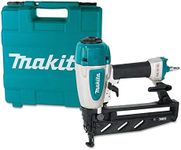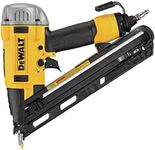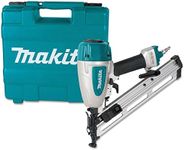Buying Guide for the Best Pneumatic Finish Nailers
Choosing the right pneumatic finish nailer can make your woodworking or carpentry projects much easier and more efficient. A pneumatic finish nailer uses compressed air to drive nails into wood, which is ideal for tasks like trim work, molding, and cabinetry. To find the best fit for your needs, it's important to understand the key specifications and how they impact performance and usability.Nail GaugeThe nail gauge refers to the thickness of the nails that the nailer can handle. This is important because different projects require different nail sizes. Nail gauges typically range from 15 to 18, with 15-gauge nails being thicker and stronger, suitable for heavy-duty tasks like door frames, while 18-gauge nails are thinner and better for delicate trim work. Choose a nail gauge based on the type of projects you plan to undertake.
Nail LengthNail length is the range of nail sizes that the nailer can drive. This is crucial because different materials and project requirements will need different nail lengths. Common lengths range from 1 inch to 2.5 inches. For example, shorter nails (1-1.5 inches) are ideal for thin trim and delicate work, while longer nails (2-2.5 inches) are better for thicker materials and more secure fastening. Consider the thickness of the materials you will be working with to determine the appropriate nail length range.
Magazine CapacityMagazine capacity indicates how many nails the nailer can hold at once. This is important for efficiency, as a larger capacity means fewer reloads during a project. Capacities can range from around 100 to 150 nails. If you have large projects or prefer fewer interruptions, a higher capacity magazine will be beneficial. For smaller, detailed work, a lower capacity may suffice.
Operating PressureOperating pressure is the amount of air pressure required for the nailer to function properly, usually measured in pounds per square inch (PSI). This is important because it affects the nailer's performance and compatibility with your air compressor. Typical operating pressures range from 60 to 120 PSI. Ensure your air compressor can provide the necessary pressure for the nailer you choose. Higher pressure models are generally more powerful and suitable for tougher materials.
WeightThe weight of the nailer affects how easy it is to handle and use for extended periods. Lighter nailers (around 2-3 pounds) are easier to maneuver and cause less fatigue, making them ideal for detailed or overhead work. Heavier models (4-5 pounds) may offer more stability and power but can be tiring to use for long durations. Consider the type of work you'll be doing and how long you'll be using the nailer to determine the best weight for you.
Depth AdjustmentDepth adjustment allows you to control how deep the nails are driven into the material. This is important for achieving a professional finish and preventing damage to the workpiece. Some nailers offer tool-free depth adjustment, which is more convenient and quicker to use. If you need precise control over nail depth for various projects, look for a nailer with easy and accurate depth adjustment features.
Jam Clearing MechanismA jam clearing mechanism helps you quickly and easily remove any nails that get stuck in the nailer. This is important for maintaining productivity and preventing damage to the tool. Some nailers have tool-free jam clearing, which allows you to resolve jams without additional tools. If you want to minimize downtime and frustration, choose a nailer with an efficient and user-friendly jam clearing mechanism.

